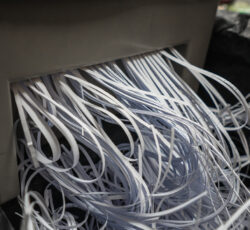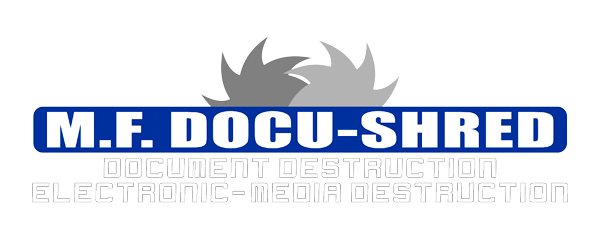
In today’s digital age, where most information is stored electronically, the humble shredded document may seem like a relic of the past. However, there are still plenty of situations where physical documents need to be disposed of securely. From legal documents to confidential corporate information, shredding remains an essential practice to protect sensitive data.
But what happens if a shredded document needs to be reconstructed? Is it actually possible, or is it just a plot device we see in movies? In this blog post, we will explore the art and science behind putting back together a shredded document.
The Process of Document Reconstruction
Document reconstruction is a painstaking process that involves piecing together the shredded fragments of a document to restore its original content. Depending on the type of shredder used, the level of shred, and the size of the document, this process can be relatively simple or extremely challenging.
1. Shredder Types and Shred Levels
To understand document reconstruction, it is important to first comprehend the types of shredders commonly used. Strip-cut shredders produce long strips of paper, while cross-cut or confetti-cut shredders create small diamond or rectangular-shaped pieces. Micro-cut shredders take it a step further by reducing documents to tiny, almost impossible-to-piece-together particles.
The type of shredder used directly impacts the difficulty of document reconstruction. Strip-cut shredders produce long, linear strips, which can be relatively straightforward to align and tape back together. On the other hand, cross-cut or micro-cut shreds are much more challenging to reconstruct due to the complexity of their shapes and the sheer number of fragments.
2. Fragment Size and Reconstruction Difficulty
The smaller the shredder fragments, the more challenging it becomes to reconstruct a document. Consider a document shredded into small confetti-sized pieces – reconstructing it would be a daunting task, requiring a significant investment of time and resources. On the other hand, if only a few large strips need to be reassembled, the process can be more manageable.
Methods of Document Reconstruction
While document reconstruction is possible, it is by no means a foolproof or speedy process. Here are a few techniques often utilized by professionals attempting to reconstruct shredded documents:
1. Manual Assembly
The most straightforward method is to manually piece together the shredded fragments. Skilled document reconstruction experts can use a combination of visual analysis, pattern recognition, and manual dexterity to reconstruct the document. However, this method can be extremely time-consuming and may not be feasible for complex or extensively shredded documents.
2. Technology-Assisted Reconstruction
In recent years, technological advancements have provided assistance in the process of document reconstruction. Software programs have been developed that use algorithms to aid in the identification and reconstruction of shredded documents. These programs can analyze patterns and shapes of fragments to suggest possible matches, speeding up the reconstruction process.
Legal Implications and Ethical Considerations
Document reconstruction can be a useful tool in cases where crucial information needs to be recovered. Law enforcement agencies, for example, may attempt to reconstruct shredded evidence in criminal investigations. However, the use of reconstructed documents as evidence in a court of law can be a contentious issue. Critics argue that reconstructed documents may be subject to manipulation or misinterpretation, undermining their reliability as evidence.
Furthermore, document reconstruction raises ethical concerns. While it may be justifiable in certain legal or investigative scenarios, reconstructing private or confidential documents without consent infringes on individual privacy rights. There is a fine line between uncovering the truth and violating personal boundaries, and document reconstruction should always be approached with caution and in adherence to legal and ethical guidelines.
Conclusion
While document reconstruction is technically possible, the feasibility and success rate heavily depend on various factors such as shred level, fragment size, and available resources. Manual assembly and technology-assisted methods can be employed to reconstruct shredded documents, but the process is time-consuming and may not always yield satisfactory results. Legal and ethical considerations must also be taken into account when engaging in document reconstruction, balancing the need for information with privacy rights. As technology continues to evolve, the future of document reconstruction remains an intriguing and complex area of study.
Got questions? Let us help! Contact us today to learn more about what we can do for you!

